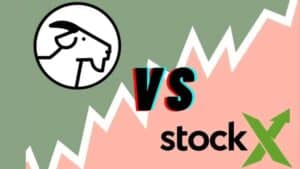The total value of all available CS:GO skins listed on Steam and top third-party marketplaces currently amounts to an estimated $4.1 billion. This staggering figure reflects the explosive growth of the CS:GO skin trading economy since 2013. Let‘s take an in-depth look at this billion-dollar digital cosmetics market.
The Basics of CS:GO Skins
CS:GO features cosmetic skins that customize the look of players‘ weapons. Skins come in 5 rarity grades:
- Consumer (Grey) – Common basic skins
- Industrial (Light Blue) – Uncommon simple skins
- Mil-Spec (Blue) – Less common designs with some color
- Restricted (Purple) – Rare and visually distinctive skins
- Classified (Pink) – Highly rare with unique art and textures
- Covert (Red) – The rarest skin type with the most dramatic designs
There are also extraordinarily rare special skins like souvenir skins, knives, and gloves. Knife skins in particular are always highly coveted.
Skin values are determined largely by rarity, visuals, and demand. Discontinued "contraband" skins no longer obtainable from loot boxes become extremely valuable. For example, the rare Covert "Dragon Lore" sniper rifle skin sells for upwards of $3,000.
Steam Marketplace Powering Billions in Trades
Steam provides an in-game marketplace that serves as the central hub for buying, selling, and trading CSGO skins. Transactions involve Steam wallet funds rather than real money. However, many third-party sites like SkinBaron have emerged to facilitate skins trading with actual cash.
Valve takes a 15% cut of every skin sale on Steam‘s marketplace. This nets the company a staggering $54 million in estimated monthly revenue just from CS:GO skins. In 2021 alone, over 126 million CS:GO skins were traded on the marketplace.
Skin Creators Cashing In on Community Designs
While Valve massively profits from the marketplace, so do the artists who design sought-after skins. Talented workshop creators can earn serious money from their winning designs. Top contributors easily make six figures annually, with one reportedly earning over $100,000 from a single iconic skin.
| Skin Name | Designer | Revenue |
|---|---|---|
| Asiimov | Zhuk | ~$70,000 |
| Neon Rider | [sd] Quyaz | ~$30,000 |
| Bullet Rain | nINJASZE | ~$20,000 |
Workshop contributors get a 5-15% cut of every resale of their item on Steam. Unique or rare skin patterns also drive up value for buyers hoping to stand out.
Scams and Controversies in Unregulated Markets
The explosive growth of largely unregulated third-party skin trading and gambling sites led to numerous scams, cheating, and lawsuits. Some sites enabled shady bot trading or rigged gambling disconnected from the game.
High profile legal cases like Martin vs. Valve and Cassel vs. Valve in 2016 established skins as digital assets with real monetary value. This led Valve to crack down on the use of skins for gambling on these third-party platforms.
While questionable sites still exist today, top marketplaces have implemented practices like identity verification, required trade holds, and escrow systems to improve safety and prevent fraud.
Million Dollar Skins and the Road Ahead
Some ultra rare skins have sold for mind-boggling amounts according to reports. In mid-2022, a Souvenir Dragon Lore AWP skin reportedly sold for $150,000 on the SkinBaron marketplace.
But the most expensive confirmed transaction remains a private sale in 2020 of the exceedingly rare blue gem pattern Karambit knife skin for around $1.5 million.
| Most Expensive CS:GO Skins | Price |
|---|---|
| Souvenir Dragon Lore AWP | $150,000 |
| Blue Gem Karambit | $1,500,000 |
| 661 Pattern AK-47 | $160,000 |
| Crimson Web Karambit | $123,000 |
As CS:GO skins become increasingly commoditized digital assets, larger corporate investors are getting involved in trading while professional CSGO teams seek skin sponsorship deals. Government regulation remains minimal but could expand in the future. For now though, the CS:GO skin economy continues booming.








